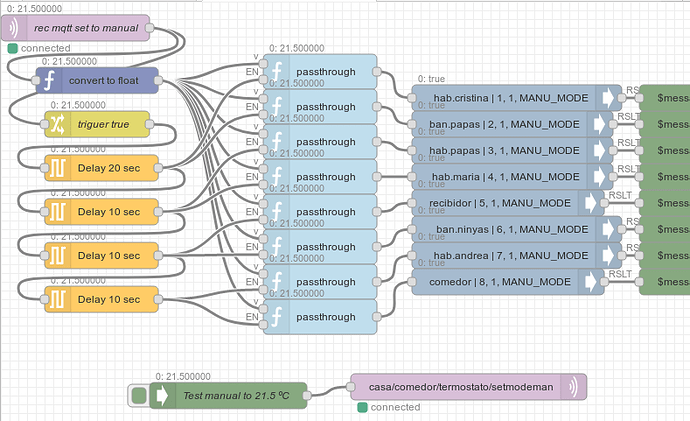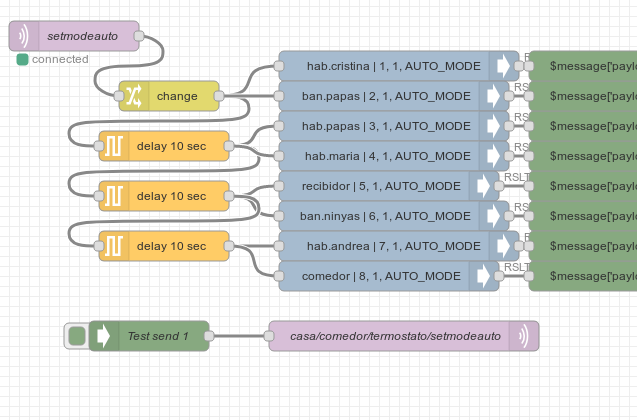Thank you so much for your reply @job.
With your help I have recreated the node-blue flows and now at least they work.
But I still have problems executing them since usually some of the TRVs refuse to execute the order.
Mansetall.txt (7,9 KB) Autosetall.txt (5,6 KB)
I have been several checks and trying to isolate the cause of the error, but I still have not been able to find out why and I continue testing.
When the fault is processed, an error of the type “communication with device has been disturbed …” usually appears on the homegear UI console.
Reviewing the logs (setting debug level 6) I can not see clear communication problems with the devices, but when errors appear show some messages about the device (trv) in question does not respond (not reply).
Sometimes, after a few minutes, homegear seems to be able to execute the order on the device (I suppose that due to the retries queue it has established) and in others the change is not made in any way on that device.
Comment that if after receiving the error, if I send the command again but specifically to that device, it responds normally without problems to that order or any other query that you can make (over mqtt, rpc from HA, etc.), by what seems evident that the problem that occurs is of very short duration.
What I have tried:
-
I had linked homegear in HA (Home Assistant) and I have unlinked it to prevent the interaction and avoid a possible cause of interference in the execution of orders that could overlap.
-
I have checked the RF coverage and it does not seem to be a cause at least in a clear way that can prove intermittent communication failures on the devices, but at this moment cannot be totally discarded.
-
I have increased the delay times in node-blue flows, and although it seems to improve the success rate, it fails to eliminate the errors completely.
At the moment I do not have many more ideas to diagnose the problem, and at the moment I continue doing more tests to verify in a more effective way that RF coverage is not the cause, since the situation of the RF transmitter of the rpi is not the best for reach all trv.
There are some trvs that report an RSSI between 75 and 85, which is clearly not the best.
Any suggestions will be very helpful.
Thank you.

